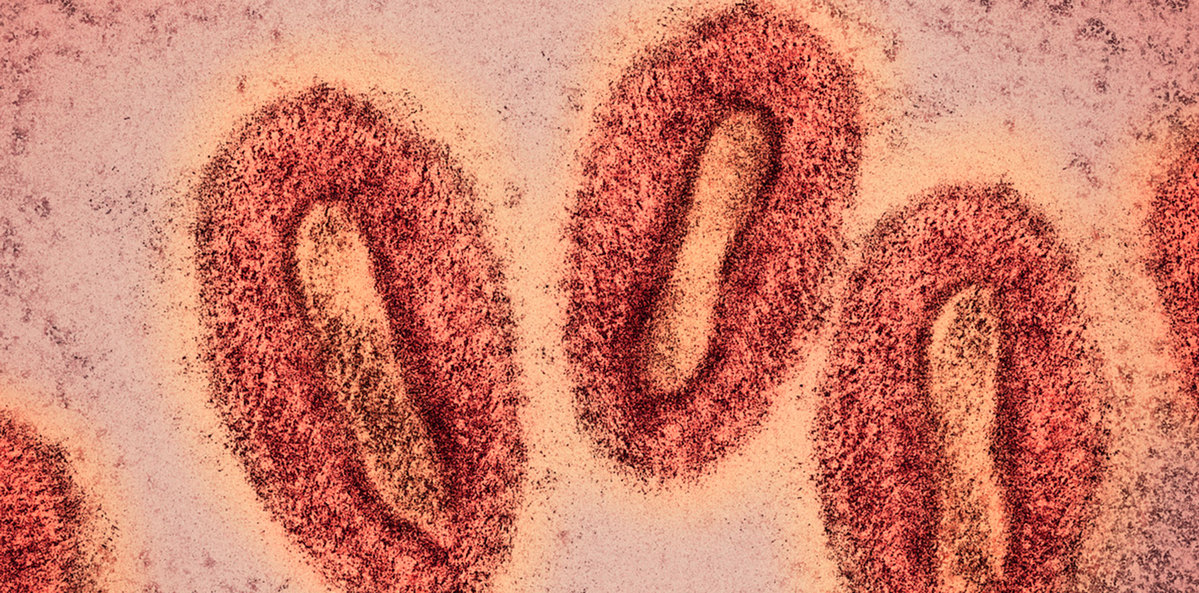Australian experts have called for increased vigilance to avoid a repeat of the 2022 outbreak.
Australian infectious diseases experts have called for increased vigilance following the World Health Organization’s declaration that mpox is once again a global emergency.
Mpox case numbers in Australia have already well surpassed those for the whole of 2022, when the disease was first declared an international emergency.
The Department of Health and Aged Care this updated its dedicated mpox webpage to reflect the latest WHO declaration but is yet to make an official statement.
The WHO made its announcement on Wednesday after its International Health Regulations Emergency Committee of independent experts met to discuss the surge in mpox cases in the Democratic Republic of the Congo and a growing number of other countries in Africa.
The committee reported that it considered the rise in case numbers to be a public health emergency of international concern (PHEIC), with potential to spread further across countries in Africa and possibly outside the continent.
“The emergence of a new clade of mpox, its rapid spread in eastern DRC, and the reporting of cases in several neighbouring countries are very worrying,” WHO Director-General Dr Tedros Adhanom Ghebreyesu said.
“On top of outbreaks of other mpox clades in DRC and other countries in Africa, it’s clear that a coordinated international response is needed to stop these outbreaks and save lives.”
The declaration is the second in as many years relating to mpox, which is considered endemic to countries in central and west Africa. In July 2022, the multi-country outbreak of mpox was declared a PHEIC as it spread rapidly via sexual contact across a range of countries where the virus had not been seen before.
Mpox was first reported in Australia May 2022, and in July that year was declared a communicable disease incident of national significance (CDINS), which was relaxed by November.
The PHEIC status was lifted in May 2023.
There were 144 cases of mpox reported to Australia’s National Notifiable Disease Surveillance System in 2022 and 26 in 2023.
Cases this year have already surpassed the 2022 total at 241, with the bulk (108) reported in Victoria. NSW is not far behind with 93 cases, followed by Queensland (23), the ACT (12), South Australia (four) and the Northern Territory (one). Western Australia and Tasmania are yet to record any cases.
In June Victorian health authorities widened eligibility for mpox vaccination, after recording 21 locally acquired cases.
The Jynneos vaccine, which is given in two doses four weeks apart, is available free for at-risk people, including men who have sex with men; sexually active transgender and gender diverse people, if at risk of mpox exposure; sex workers, particularly those whose clients are at risk of mpox exposure; sexual partners (including anonymous or intimate contacts) of all of the previous groups; sex-on-premises venue staff and attendees; people living with HIV, if at risk of mpox exposure, and their partners; and laboratory personnel working with orthopoxviruses.
States and territories manage vaccination programs so they may vary according to local conditions.
Clinicians were also advised to test patients with compatible symptoms, such as proctitis or genital/anal lesions, particularly men who have sex with men and those with recent international travel history.
Professor David Tscharke, a poxvirus researcher from the John Curtin School of Medical Research at the Australian National University, said the current outbreak was larger and involved more person-to-person spread, leading to many more people being infected across several countries.
He said the current concern was heightened by the potential of mpox to spread rapidly via the close contact that occurs during sexual encounters, which caused the 2022 global outbreak.
“Mpox is a slow-burning fire that has been allowed to smoulder in central Africa and is flaring up again. This time the WHO is ringing the alarm,” he said.
“There is evidence to suggest that the current outbreak, which is caused by a different variant of the virus is also spreading by this route [sexual contact].
“This is a disease that can be stopped by an existing vaccine, but vaccine supplies are not getting to the places they are needed. It is hoped that the WHO call to action by issuing their notice of concern will turn this around so that the spread of this disease can be stopped.”
Dr Matthew Mason, a public health and infectious diseases expert at the University of the Sunshine Coast, said the WHO declaration emphasised the need for coordinated international efforts to control the outbreak.
“For Australians, this declaration highlights the importance of global health vigilance, as diseases can easily cross borders and impact regions far from their origin,” he said.
“The situation underscores the need for proactive measures to prevent the spread of mpox and similar diseases worldwide. This is happening because high-income countries have not supported efforts to limit this and other diseases in Africa.”
Dr Mason said the current outbreak was concerning due to a new strain, clade 1b, which was spreading rapidly in the DRC and at least 12 neighbouring countries.
“This strain is potentially more deadly and appears to infect children at a higher rate than other strains,” he said.
Related
Professor Adrian Esterman, chair of Biostatistics at the University of South Australia Allied Health and Human Performance, said Australian public health authorities had managed to control mpox through vaccination efforts, particularly targeting close contacts of infected individuals.
However he echoed the concerns about the new strain of mpox given its higher transmissibility and potential to cause more severe disease than the strain that circulated in 2022.
“This development has prompted the WHO to take decisive action, highlighting the need for increased vigilance and international cooperation to prevent further spread,” he said.
Professor Nathan Bartlett, head of the Viral Immunology and Respiratory Disease group at the Hunter Medical Research Institute, University of Newcastle, said while the spread of mpox was “troubling – the good news is, we know that vaccines against viruses in the orthomyxovirus genus (like variola and mpox) are highly effective”.
“With a coordinated international response (surveillance, education, vaccination), control of this outbreak and future outbreaks is achievable.”
Mpox illness is usually mild and people typically recover within a few weeks. Signs and symptoms can include a distinctive rash, lesions (bumps that turn into pimples, blisters or sores, and may burst to form ulcers or scabs); swollen lymph nodes; fever; headache; muscle aches; joint pain; back pain; chills; exhaustion.
The rash changes and goes through different stages, before forming a scab and falling off. It can appear as lesions (pimples, blisters or sores, which can then burst to form ulcers or scabs). These can vary in size and number with as little as a single lesion to several thousand. The lesions look like blisters similar to chickenpox, but larger.
The rash may occur on any part of the body, including the face and inside the mouth, the torso, arms and hands, legs and feet, and the genital and perianal regions. Some people have reported a rash appearing in the genital and perianal regions without spreading to other areas of the body. Some only experience this rash or pain in their mouth or anus with no other symptoms. The rash can be painful, especially if the lesions join or appear in the mouth or rectum.
The Department of Health and Aged Care has a range of mpox resources that are available online for patients and healthcare professionals.





